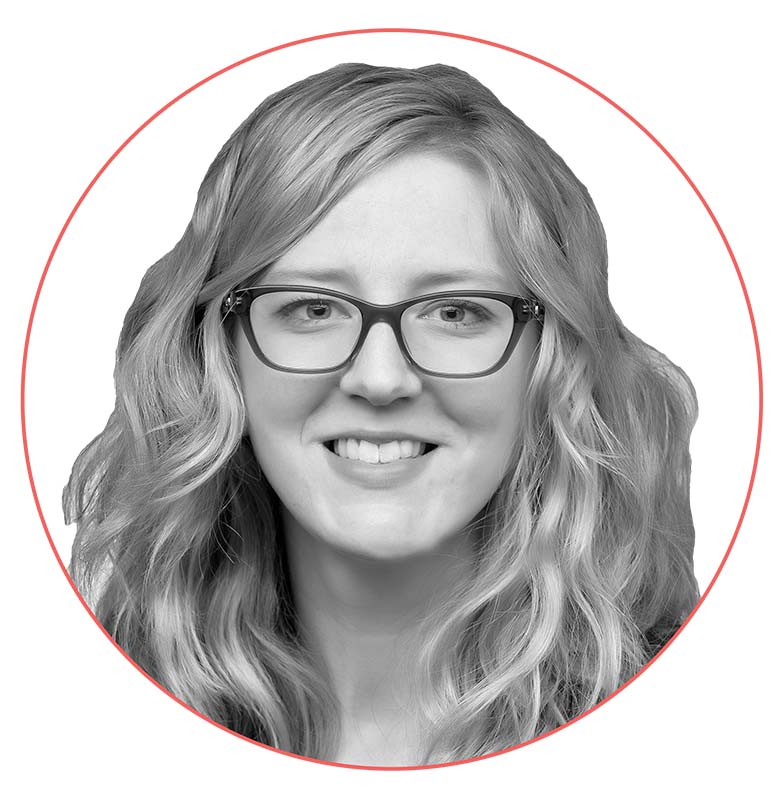More Power to the Women
For Women’s History Month, Let’s Celebrate the Powerful Women of Water Power Again

This article is the second of two in a Women’s History Month series that showcases a handful of the National Renewable Energy Laboratory’s (NREL's) outstanding women researchers in water power.
“Why do women need renewable energy?” asked an NREL report published in 2000.
From sophisticated mud stoves in Pakistan to sustainable oil lamps in Peru and complex food preservation and water purification techniques in Sudan, women have been invisibly inventing novel renewable energy technologies for decades, according to the report’s author, Elizabeth Cecelski. But, Cecelski wrote, “Women’s indigenous technology innovations, often highly sophisticated, have not been considered as real science.”
Today, women are better represented in renewable energy than the energy sector overall. Still, that is not saying much. While women hold about a third of the jobs in renewable energy, their participation in science, technology, engineering, and mathematics (STEM) positions is far lower than in administrative roles.

So, rather than ask, “Why do women need renewable energy?” we might do better to say definitively, “Renewable energy needs women.” In the meantime, let us not overlook the women who broke through barriers to get here. We asked three more of NREL’s women in water power (find the first three here) to answer a few questions about their career paths and help inspire the next generation to join STEM, renewable energy, and water power.
Question: What’s Your Scientist Origin Story?

Answer From Jennie Jorgenson, Energy Systems Modeling Engineer:
During my final year in college, my hometown of Fargo, North Dakota, had its second 100-year flood just one year after recovering from another 100-year flood. Even then, 10 years ago, people were starting to understand that this was an example of potential consequences of climate change and that these types of floods could become more frequent instead of every 100 years. As a kid, I was drawn to engineering, but that was the moment that attracted me to renewable energy.
Answer From Aryana Nakhai, Water Power Techno-Economic Engineer:
As an undergraduate student, I studied electrical engineering, and I thought my original purpose was to be in the automotive industry. But after working for an automotive manufacturing company, it quickly became obvious that it wasn’t a good fit for me.
At that point in my academic career, I felt that I needed to figure out a new path and understand where I can make an impact while genuinely supporting my field. So, I met with several of my professors to understand the opportunities available to me through my university and help me figure out my new goal. That’s when I was introduced to the power field and realized my interest in renewable energy.
Answer From Sherry Stout, Integrated Decision Support Engineer:
I grew up in rural New Mexico and went to a state school. Then, I lived in Morocco for a while where I worked in renewable energy and water power, staying in the field for years before I even thought about getting a master’s degree. Now that I’ve been working at NREL almost nine years, I'm getting a Ph.D. in behavioral science. The background needed to be a lab research engineer is really different from that of a community leader, like me.
In some ways, my history allows me to work more effectively with diverse and low- to moderate-income communities because we have a shared lived experience. “Bridge” was actually in my job description; a lot of my role focuses on bridging research and community needs. I will probably never put “Ph.D.” on my business card because it can hinder some community work. The first question might be, “Are you here to work with us or study us?” I want communities to see NREL as a partner in understanding and meeting their energy transition and decarbonization goals.
Question: What Barriers, if Any, Did You Face Throughout Your Career?
Answer From Jennie Jorgenson:
When I was pursuing an undergraduate degree in chemical engineering, it was a highly male dominated field. I was only one of four women in our class. I didn't have my first female engineering teacher until I was a senior, so I had to constantly remind myself that I still belonged even if I didn't see anybody like me in leadership roles or as a teacher.
Another challenge I had to overcome was a fear of public speaking. You always think of engineers as more introverted, but giving technical presentations was a huge part of our curriculum. I've had tons of practice since, but it's still not something that comes easy to me.

Answer From Aryana Nakhai:
I was one of a few girls in all my classes. Sometimes, I was one of two out of 20 or 30 students in my college’s electrical engineering courses. In a very male-dominated academic environment, it's so easy to self-doubt, especially if you're comparing yourself to your classmates and letting that define where you stand. As a student, what I eventually realized is that that in no way defines your ability to pursue one path over another or how much you deserve to be there.
Answer From Sherry Stout:
Community engagement and deployment work can be overlooked as a skill set. Working with communities to understand their needs while also working with researchers to develop solutions requires a wide variety of skills. We have yet to see any country fully decarbonize or meet their carbon reduction goals; we can make all these plans, we can have all this technology, but no country has actually gotten there. That says we're missing something.
I'm not a scientific rockstar under the traditional definition—someone with a science or engineering Ph.D. and hundreds of publications. And I'm OK with that. I'm studying behavioral science because we could have the coolest technology on the planet, but if you can't get people to change their behavior, we won’t be able to decarbonize our energy systems.
Question: What’s Your Role at NREL? What Are You Working on Now?
Answer From Jennie Jorgenson:
My official title is Energy Systems Modeling Engineer. Generally, my work focuses on what are called renewable integration studies—detailed looks at how the power system might operate with a lot of renewable energy and what technologies, like energy storage, might help integrate more renewable energy into the grid.
A lot of my work focuses on hydropower. Hydropower is interesting because it’s a carbon-free source of electricity, but dams have lots of other purposes, like recreation, fish and wildlife habitation, and irrigation. Hydropower inherently has a lot of flexibility, but that flexibility might be limited by all those other things. It’s part of a very complicated system.
Answer From Aryana Nakhai:
I am a marine energy research engineer. Marine energy is not a commercialized field like wind energy and solar power, so I use my electrical engineering background to help marine energy technologies get to a point of technical reliability and robustness while being cost-effective enough to reach commercialization. My day-to-day tasks vary from technical cost modeling and data collection to system-level design, modeling and simulation, and in-lab building and testing for, for example, a wave-energy-powered desalination system for the U.S. Department of Energy’s Waves to Water Prize.
I'm really thankful that I’ve had the opportunity to gain technical experience in a handful of different avenues and projects at NREL just within my first year. Getting to work alongside a team of people who have different educational backgrounds and expertise and the same goal and passion in our work really helps make for a supportive and healthy work environment. I think that's pretty unique about NREL.

Answer From Sherry Stout:
I work with communities on everything from energy planning to climate resilience. In Alaska, homes are literally falling into the Bering Strait because we're losing coastline so rapidly. As sea ice melts, hurricanes slam those chunks into permafrost coastlines with 120-mile-per-hour winds. Or, if you're in a drought in the middle of nowhere and static is really high, utilities shut off power for fear of starting fires—but you've got people in your community that need electricity for health reasons, like oxygen machines.
So, we go in and figure out: What are these communities trying to be resilient to? What are their main risks or hazards? What are their vulnerabilities? And we help them address that.
Question: What’s Your Advice for Young Women Who Want To Pursue Careers in Science, Technology, Engineering, and Mathematics Fields?
Answer From Jennie Jorgenson:
Women and girls belong in STEM. Don’t let anybody, including yourself, tell you otherwise, no matter what you might see. Like my experience in college, just because you don't see a lot of women in the field doesn't mean that you shouldn't be there. If you enjoy tackling challenging problems and asking big questions, that's really all it takes.
Answer From Aryana Nakhai:
Drive and dedication are huge parts of getting where you want to be—even if where that is might not be obvious to you immediately or for a few years. That is totally OK. Find the resources and the people that can help support you and present opportunities for you.
I would also advise young girls interested in STEM to start early and take an engineering or computer coding course if their high school offers it. If anything, it’ll provide you with a little bit more confidence when starting college in a STEM program. I didn’t do that when I was in high school, but I know it would have helped overcome the learning curve in my college engineering courses. Having experience with at least one computer coding language is a very valuable skill set that can be applicable in many STEM jobs and roles.
Answer From Sherry Stout:
I had never met a woman scientist until college. Seeking out connections is really important, but also don’t put yourself in a box. A scientist doesn’t always look like a woman in a white lab coat with weird gloves and big goggles holding a test tube.
Science can be working on the ground with people. Science can be working in the lab with a test tube. Let your personality drive you. If you're super extroverted, you're probably not going to love sitting down in a laboratory all day by yourself. And if you're super introverted, you would probably hate my job.
Missed the first article in the Women’s History Month series? No problem! Read it here. Remember to sign up for NREL's water power newsletter, too!
However you identify, we want you in STEM! Check out NREL’s education program to find resources for teachers and students of all ages, career stages, and identities.
Last Updated May 28, 2025
